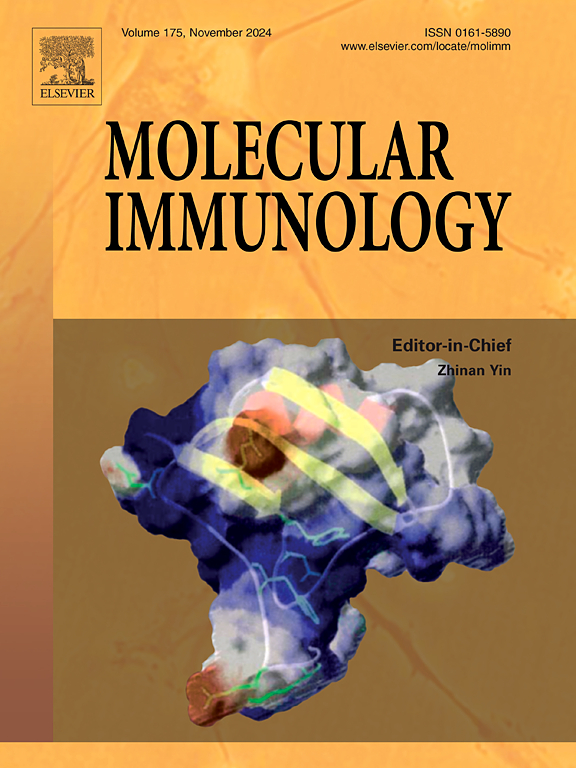NRF1 alleviates cerebral ischemia-reperfusion injury by transcriptionally activating FTO and downregulating m6A-mediated FOXO1 expression
IF 3
3区 医学
Q2 BIOCHEMISTRY & MOLECULAR BIOLOGY
引用次数: 0
Abstract
Background
Studies show that upregulation of Nuclear respiratory factor 1 (NRF1) inhibits cerebral ischemia-reperfusion injury (CIRI). However, the molecular mechanism of NRF1 in CIRI remains to be largely unrevealed. Therefore, in this study, we aimed to investigate the potential mechanisms by which NRF1 regulates OGD/R-mediated neuronal apoptosis and its effects on CIRI in rats.
Methods
A middle cerebral artery occlusion/reperfusion (MCAO/R) rat model was established to detect the expression of NRF1 in brain tissues of MCAO/R rats. Next, neuronal cells were treated with oxygen-glucose deprivation/reperfusion (OGD/R) and transfected with NRF1 overexpression vectors (pcDNA-NRF1), and cell apoptosis, inflammatory reaction and oxidative stress were evaluated. Furthermore, the enrichment of NRF1 in the promoter of fat mass and obesity-related genes (FTO) was evaluated with ChIP analysis, and the transcriptional activation of FTO by NRF1 was evaluated with luciferase reporter gene analysis. The m6A level of forkhead box O1 (FOXO1) mRNA was evaluated by MeRIP analysis, and the binding of FTO to FOXO1 mRNA was evaluated by RIP analysis. FTO siRNA and FOXO1 overexpression vectors (pcDNA-FOXO1) were transfected into NRF1 overexpressing neuronal cells to perform reversal experiments. Finally, MCAO/R rats were intracranially injected with NRF1 lentiviral vectors (LV-NRF1), and the volume of cerebral infarction, pathological damage and neuronal apoptosis were determined.
Results
NRF1 was downregulated in brain tissues of MCAO/R rats and OGD/R-treated neurons. Overexpression of NRF1 inhibited cell apoptosis and reduced inflammatory factor secretion (IL-1β and TNF-α) and oxidative stress (SOD activity was increased and MDA content was decreased) in OGD/R-treated neuronal cells. Mechanistic studies shown that NRF1 promotes FTO transcriptional activation by binding to the FTO promoter, while FTO interference upregulates FOXO1 expression by increasing the m6A level of FOXO1 mRNA. Silencing FTO or overexpression of FOXO1 reversed the inhibitory effect of NRF1 overexpression on OGD/R-induced neuronal damage. In addition, upregulation of NRF1 reduced the volume of cerebral infarction and alleviated neurological impairment and neuronal apoptosis in MCAO/R rats.
Conclusions
This study revealed that NRF1 inhibited neuronal apoptosis and alleviated neurological deficits and neuro-inflammation in MCAO/R rats by promoting FTO-m6A-mediated downregulation of FOXO1, which may provide a potential therapeutic strategy for CIRI.
NRF1通过转录激活FTO,下调m6a介导的FOXO1表达,减轻脑缺血再灌注损伤
研究表明,核呼吸因子1 (NRF1)上调可抑制脑缺血再灌注损伤(CIRI)。然而,NRF1在CIRI中的分子机制在很大程度上仍未揭示。因此,在本研究中,我们旨在探讨NRF1调控OGD/ r介导的神经元凋亡的潜在机制及其对大鼠CIRI的影响。方法建立大脑中动脉闭塞/再灌注(MCAO/R)大鼠模型,检测NRF1在MCAO/R大鼠脑组织中的表达。接下来,对神经元细胞进行氧糖剥夺/再灌注(OGD/R)处理,并转染NRF1过表达载体(pcDNA-NRF1),观察细胞凋亡、炎症反应和氧化应激的变化。此外,通过ChIP分析评估NRF1在脂肪质量和肥胖相关基因(FTO)启动子中的富集程度,并通过荧光素酶报告基因分析评估NRF1对FTO的转录激活。MeRIP分析检测叉头箱O1 (FOXO1) mRNA的m6A水平,RIP分析检测FTO与FOXO1 mRNA的结合情况。将FTO siRNA和FOXO1过表达载体(pcDNA-FOXO1)转染到NRF1过表达的神经细胞中进行逆转实验。最后在MCAO/R大鼠脑内注射NRF1慢病毒载体(LV-NRF1),观察脑梗死体积、病理损伤及神经元凋亡情况。结果MCAO/R大鼠脑组织及OGD/R处理神经元中snrf1表达下调。NRF1过表达抑制OGD/ r处理的神经元细胞凋亡,降低炎症因子(IL-1β和TNF-α)分泌和氧化应激(SOD活性升高,MDA含量降低)。机制研究表明,NRF1通过结合FTO启动子促进FTO转录激活,而FTO干扰通过增加FOXO1 mRNA的m6A水平上调FOXO1表达。沉默FTO或FOXO1过表达可逆转NRF1过表达对OGD/ r诱导的神经元损伤的抑制作用。此外,上调NRF1可减少MCAO/R大鼠脑梗死体积,减轻神经功能损伤和神经元凋亡。结论NRF1通过促进fto - m6a介导的FOXO1下调,抑制MCAO/R大鼠神经元凋亡,减轻神经功能缺损和神经炎症,可能为CIRI的治疗提供潜在的策略。
本文章由计算机程序翻译,如有差异,请以英文原文为准。
求助全文
约1分钟内获得全文
求助全文
来源期刊

Molecular immunology
医学-免疫学
CiteScore
6.90
自引率
2.80%
发文量
324
审稿时长
50 days
期刊介绍:
Molecular Immunology publishes original articles, reviews and commentaries on all areas of immunology, with a particular focus on description of cellular, biochemical or genetic mechanisms underlying immunological phenomena. Studies on all model organisms, from invertebrates to humans, are suitable. Examples include, but are not restricted to:
Infection, autoimmunity, transplantation, immunodeficiencies, inflammation and tumor immunology
Mechanisms of induction, regulation and termination of innate and adaptive immunity
Intercellular communication, cooperation and regulation
Intracellular mechanisms of immunity (endocytosis, protein trafficking, pathogen recognition, antigen presentation, etc)
Mechanisms of action of the cells and molecules of the immune system
Structural analysis
Development of the immune system
Comparative immunology and evolution of the immune system
"Omics" studies and bioinformatics
Vaccines, biotechnology and therapeutic manipulation of the immune system (therapeutic antibodies, cytokines, cellular therapies, etc)
Technical developments.
 求助内容:
求助内容: 应助结果提醒方式:
应助结果提醒方式:


